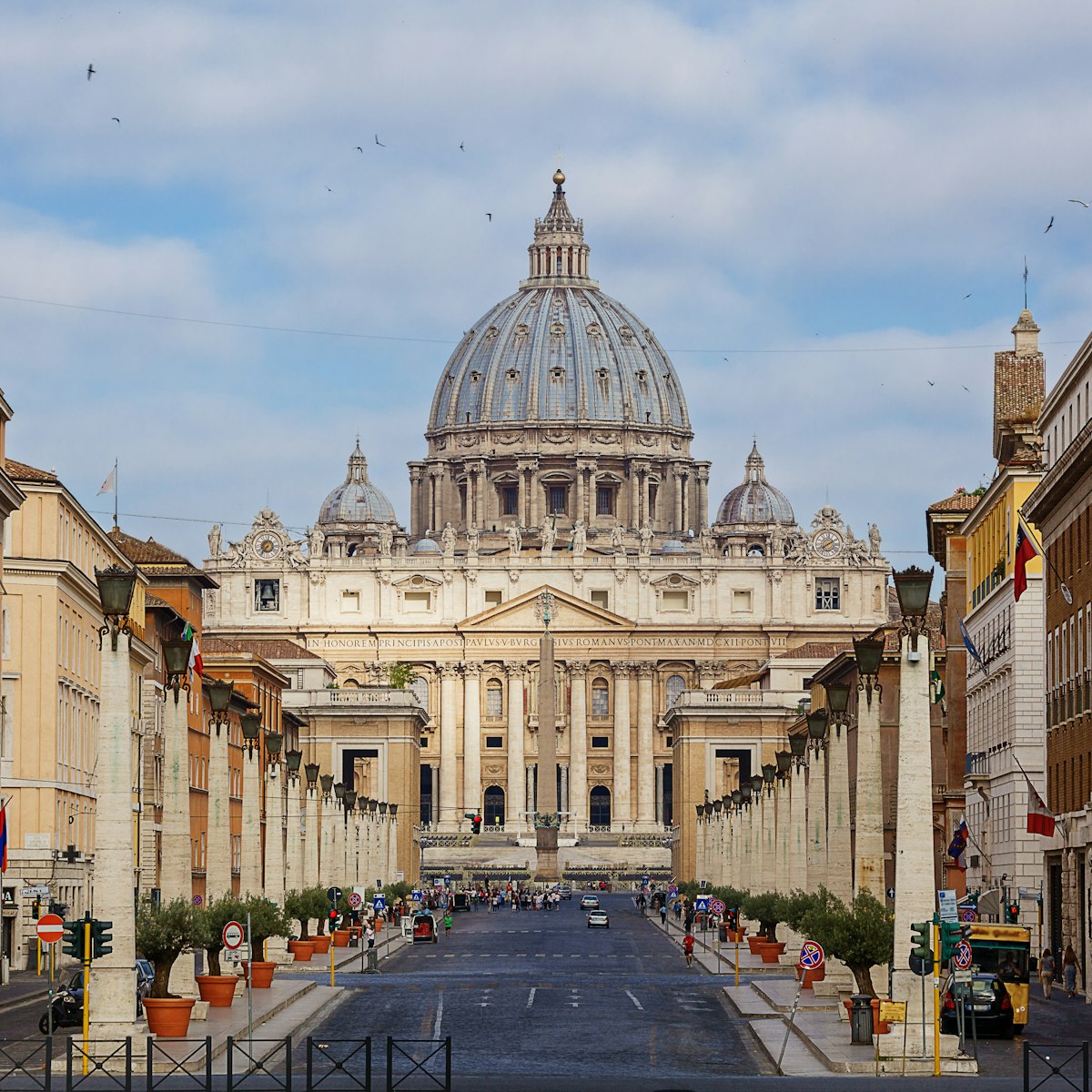The first modern construction in Rome's historic centre since WWII, Richard Meier's glass-and-marble pavilion houses the remnants of the Ara Pacis Augustae (Altar of Peace), Augustus' great monument to peace. One of the most important works of ancient Roman sculpture, the vast marble altar – measuring 11.6m by 10.6m by 3.6m – was completed in 13 BC and was put on show in this purpose-built pavilion in 2006. The entrance ticket is overpriced considering how little there is to see.
The altar was originally positioned near Piazza San Lorenzo in Lucina, slightly to the southeast of its current site. The location was calculated so that on Augustus' birthday the shadow of a huge sundial on Campus Martius would fall directly on it. Over the centuries the altar fell victim to Rome's avid art collectors, and panels ended up in the Medici collection (see the garlanded reliefs embedded in the walls of the Villa Medici), the Vatican and the Louvre. However, in 1936 Mussolini unearthed the remaining parts and decided to reassemble them in the present location. Of the reliefs, the most important depicts Augustus at the head of a procession, followed by priests, the general Marcus Agrippa and the entire imperial family.
Meier's pavilion is strongly disliked by many Romans, who believe it to be too reminiscent of the fascist buildings designed and built in Mussolini's era.
Temporary exhibitions are sometimes staged in the basement galleries, at which time a combination museum/exhibition ticket can be purchased (adult/reduced €17/13).








